
All
About Aurora Postage Stamp Trains
Rolling Stock Packaging
Cardboard Boxes
All 1967-era rolling stock (4880 onward), including passenger cars, came in snug cardboard boxes with no windows; small blocks of foam rubber—either pale yellow or, less often, pale green in color—inserted into one end prevented shifting, while the transformer cars and flat cars were sometimes wrapped in tan tissue paper (below right).
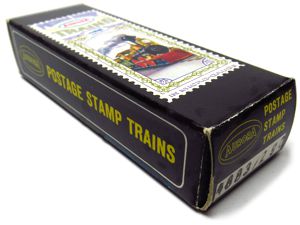
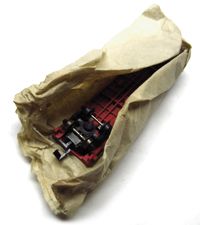
The contents were identified solely with catalog numbers and road codes stamped on the end of the box, so unless one had all of the numbers memorized, the only way to know what was inside was to open it. Doubtless this explains why today so many of the boxes are tattered and torn, and the foam rubber blocks—if they hadn't already turned to dust—are often missing. Worse, today you might find almost anything inside one of these boxes. And, since the boxes were not sealed with a cellophane wrapper or adhesive tape, there's no way to know if a car is factory mint, and even a box in good condition (such as the one shown above) may contain the wrong car.
Plastic Boxes
Beginning sometime in late 1967 or early 1968, rolling stock came in more conventional plastic "jewel case" boxes. Cars sit in flimsy clear vacu-formed nests that often yellowed and cracked with age. The box lids, which are branded with Aurora's logo in the upper left corner, have no catchments, and so they easily fall off; they were secured to the boxes at the factory with two small strips of clear tape that often turned yellow, dried up and came loose. Thus, genuine factory mint cars (such as the one shown below) are rare.
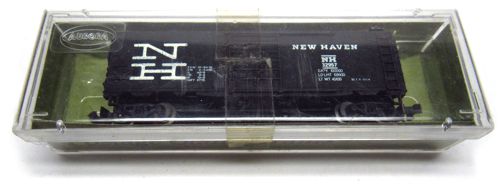
There were two eras of paper inserts, each of which went through two phases. The first era of inserts were black type on a green background. In the first phase of green inserts, the green was medium olive; these were only seen with 1967-era rolling stock (4880 onward). Only a very few of these inserts had road names/road codes.

The second phase had a dark pine green background that varied considerably in shade, and made the black type difficult—sometimes nearly impossible—to read. These were seen on all 1968-era rolling stock (4841-4870); some 1967-era rolling stock was subsequently released with the dark green as well. Some but not all dark green inserts had road names/road codes.

The reverse side (inside) of both phases was printed in solid green. The bottoms of all inserts featured the same list of "other exciting Postage Stamp cars," which included locomotives.
The second era of inserts began in 1969, when they were changed to green type on a white background—cheaper, being a one-color printing job, and also infinitely easier to read. In the first phase of white inserts, the list of other cars included MSRPs as before, except now there was a typo (an extra price at the top of the center column) and a price change (further down the same column).

In the second phase, the MSRPs were removed from the list, and instead the MSRP of the car in the box was printed on the ends, above and to the left of the car's catalog number. For both phases, the reverse side (inside) was still solid green. All white inserts also had road names/road codes.

Errata

Courtesy of Bob Williams.
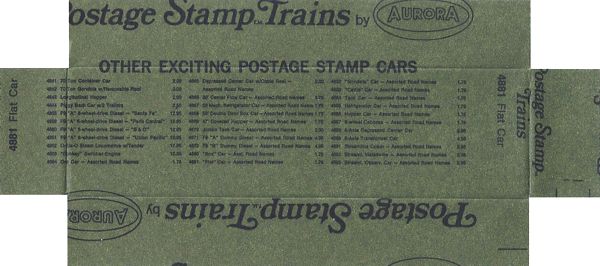






Shipping Cartons
Note that this shipping carton has no road code.

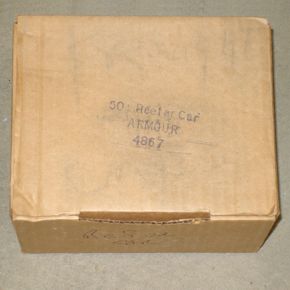
Shipping carton photos courtesy of Bob Williams.